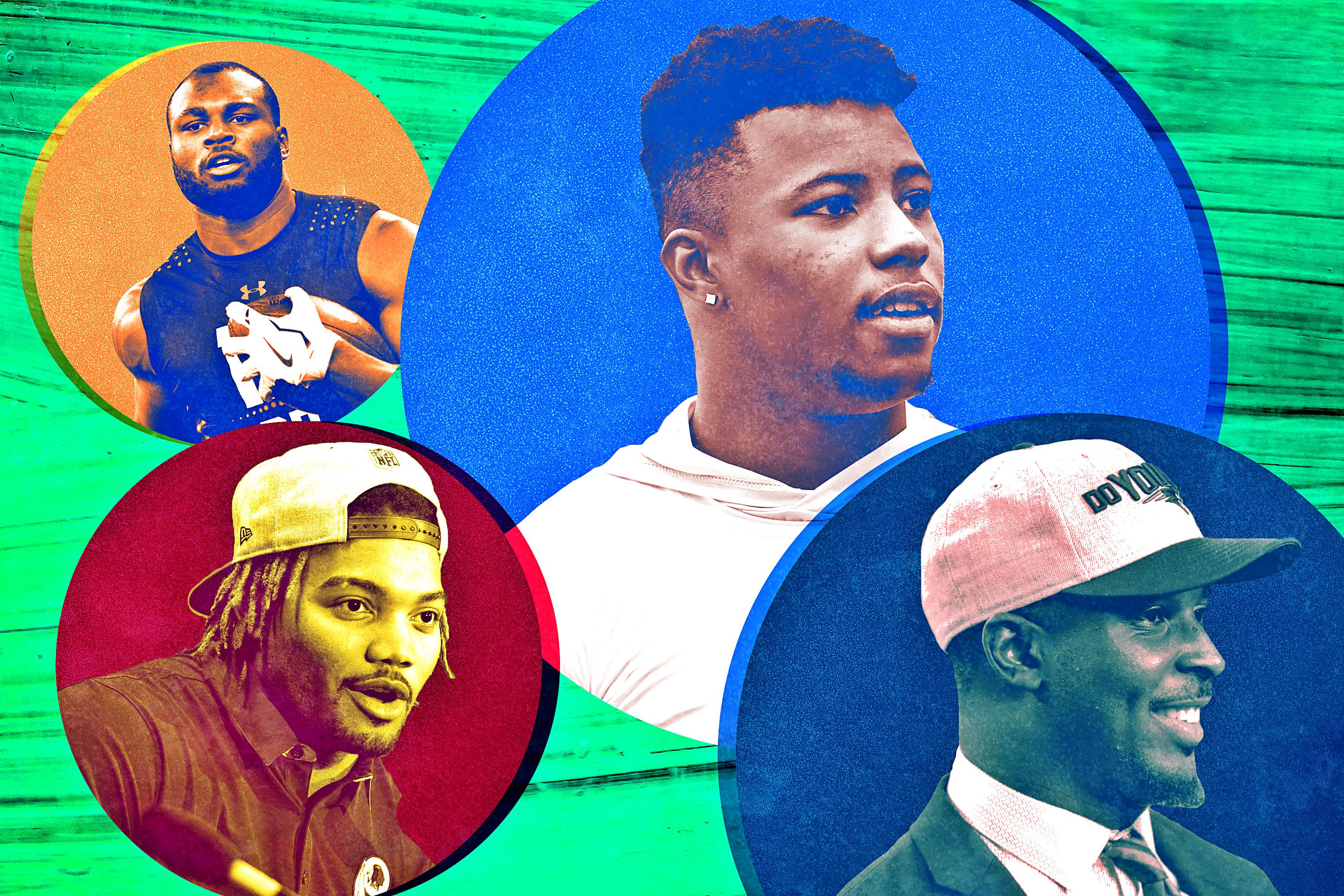
Nearly half of the teams that made the fantasy football championship game in ESPN standard leagues in 2017 had Alvin Kamara on their roster; 29 percent of teams owned fellow rookie running back Kareem Hunt. Fantasy championships often stem from finding diamonds in the running back rough, and fantasy diamonds are formed when talent meets opportunity. Now that the 2018 NFL draft is over, we can start looking for the rookie rushers with the best odds of becoming fantasy stars.
The massive caveat here is that we’ll have a much better idea of how these rookies are handling their NFL transition after OTAs and training camp, and the skilled fantasy owner will be able to sense how much preseason hype is smoke and how much is fire. By looking at how the skill sets of the top running backs in this year’s rookie class mesh with the other rushers on their new rosters, we can slot them into four tiers from a (way, way, way too early) fantasy perspective.
Tier 1: The Prince That Was Promised
Saquon Barkley: New York Giants via Penn State, Round 1 (No. 2 overall)
Measurables: 6-foot, 233 pounds, 4.40 40-yard dash
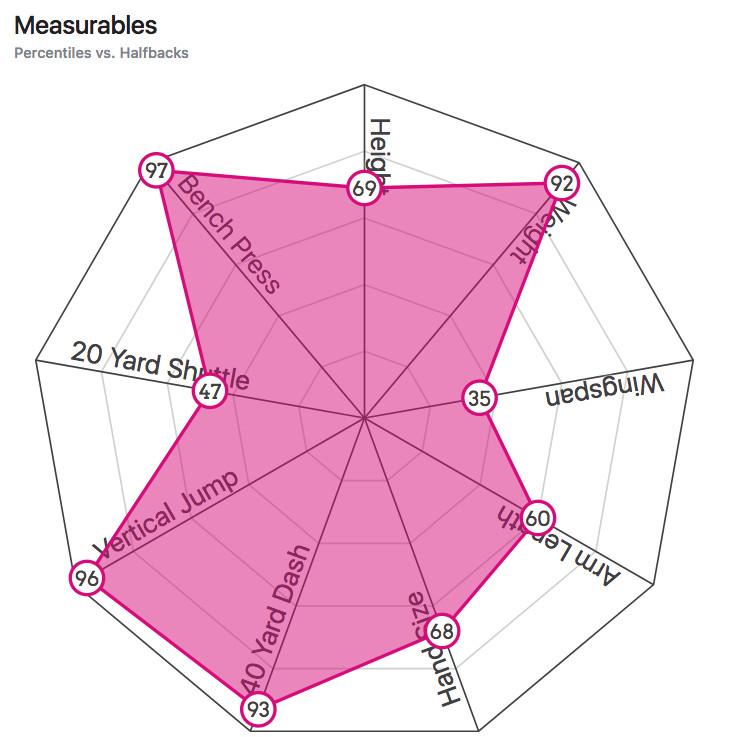
Yes, Saquon gets his own tier. I don’t need to tell you how good he is, but if you want to make your day better, read Rodger Sherman’s breakdown of 26 different players who tried (and failed) to tackle Barkley throughout his career.
The running back who can do everything now goes to a team that will need him to. New York signed Jonathan Stewart in the offseason and retained Paul Perkins and Wayne Gallman, but the Giants didn’t draft Barkley no. 2 overall to have him split carries. Whether it’s handoffs, checkdowns, or lining up the rookie in the slot and daring someone to cover him, the Giants’ backfield is likely going to be the Saquon Show for three downs at a time.
The question isn’t his snaps, but the offensive line, which was abysmal last year. New York was 26th in rushing yards (1,549), tied for 28th in rushing touchdowns (six), tied for 22nd in yards per attempt (3.9), and tied for 28th in rushing first downs (66), but signed Nate Solder to the biggest deal ever for an offensive lineman and then drafted UTEP guard Will Hernandez 34th overall. Barkley will likely be a top-15 fantasy pick in drafts this year, and if this offensive line can become respectable, that might be a bargain.
Tier 2: Rookies With the Inside Track for First- and Second-Down Snaps
Ronald Jones II, Tampa Bay via USC, Round 2 (No. 38 overall)
Measurables: 5-foot-11, 205 pounds, 4.65 40-yard dash
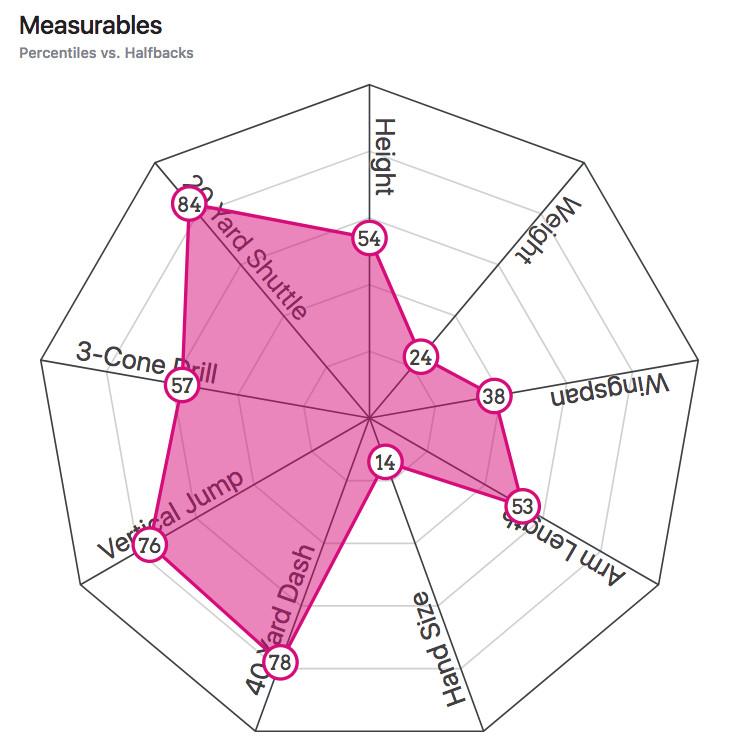
Jones has the vision to see every hole and the quickness to hit them. While he may not have as many 80-yard runs in him as Barkley, he’ll have a ton of 8-yard runs.
He won’t face much competition in Tampa. Among the 69 running backs who amassed more than 50 fantasy points in standard fantasy scoring last year, Peyton Barber and Doug Martin were 53rd and 57th respectively with 70 and 67 points. Jones’s receiving ability is somewhat of a mystery because USC used Stephen Carr as its pass-catching back, so Charles Sims will likely retain his third-down role in Tampa initially, but Martin is now in Oakland and Barber is Jones’s only competition for first- and second-down work.
Jones could get 15-20 carries a game, but if the Bucs’ line is as bad as it was last year, his load won’t matter. Tampa added center Ryan Jensen from Baltimore on a four-year deal with $22 million guaranteed, which lets the versatile Ali Marpet move back to his natural position of guard after moonlighting as Tampa’s center in 2017. If Jones benefits from improved blocking, he could deliver a rookie year reminiscent of Chicago’s Jordan Howard, a similar runner who finished as the ninth-best running back in standard scoring as a rookie in 2016.
Derrius Guice, Washington via LSU, Round 2 (No. 59 overall)
Measurables: 5-foot-11, 224 pounds, 4.49 40-yard dash
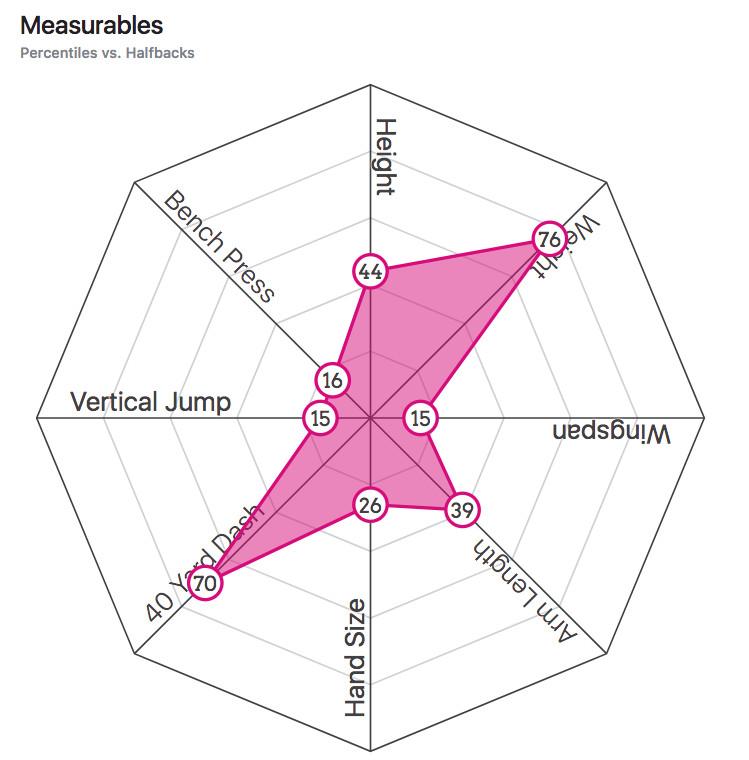
Many analysts rated Guice as the second-best running back in the draft, but he slid all the way to Washington as the seventh running back selected, at 59th overall. That slide was reportedly because Guice was late to meetings with teams during the pre-draft process. On the field, Guice is the rare back with serious speed who also seeks contact. He was limited in 2017 with a knee injury, but still managed 1,251 yards on 237 carries (5.3 yards per carry) and 11 touchdowns.
As with Jones, Guice’s pass-catching ability is unproven (32 receptions in 35 college games) so he’s unlikely to unseat veteran back Chris Thompson on third downs, but he has a strong chance to beat out Rob Kelley and 2017 fourth-round pick Samaje Perine for early down work. Guice is more skilled than both, and he could earn high upside RB2 status entering drafts if he seems likely to capture that role.
Royce Freeman, Denver Broncos via Oregon, Round 3 (No. 71 overall)
Measurables: 6-foot, 229 pounds, 4.54 40-yard dash
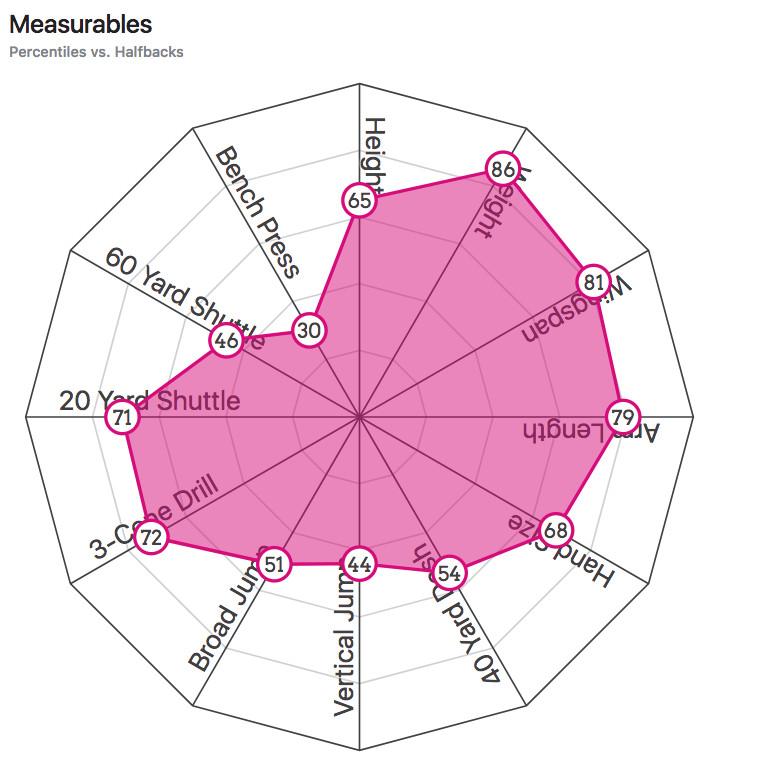
Freeman is the Pac-12’s second-all-time leading rusher and Oregon’s all-time leader in rushing yards, rushing touchdowns, carries, all-purpose yards, and 100-yard games. He’s also a large man. But Freeman moves well for his size, and he proved at Oregon that he can play both between the tackles and out in space. He has good hands, and if he can learn to use his size in pass blocking, he could become a three-down back. The biggest knock against him is that he doesn’t always play like he has a size advantage, often bouncing runs outside rather than running through contact against smaller linebackers and cornerbacks.
The release of C.J. Anderson earlier this month means Freeman just has to beat out Devontae Booker and De’Angelo Henderson for carries. Offensive coordinator and fellow Oregon alum Bill Musgrave is likely to use more power concepts in his first full year captaining Denver’s offense, and Freeman might be an excellent short yardage back who could earn a lot of goal-line carries. No Denver running back was worth starting last year, but if new quarterback Case Keenum gets Denver’s offense humming, it could lift all fantasy boats, Freeman’s included.
Tier 3: Talent in a Hopeless Place
Rashaad Penny, Seattle Seahawks via San Diego State, Round 1 (No. 27 overall)
Measurables: 5-foot-11, 220 pounds, 4.46 40-yard dash
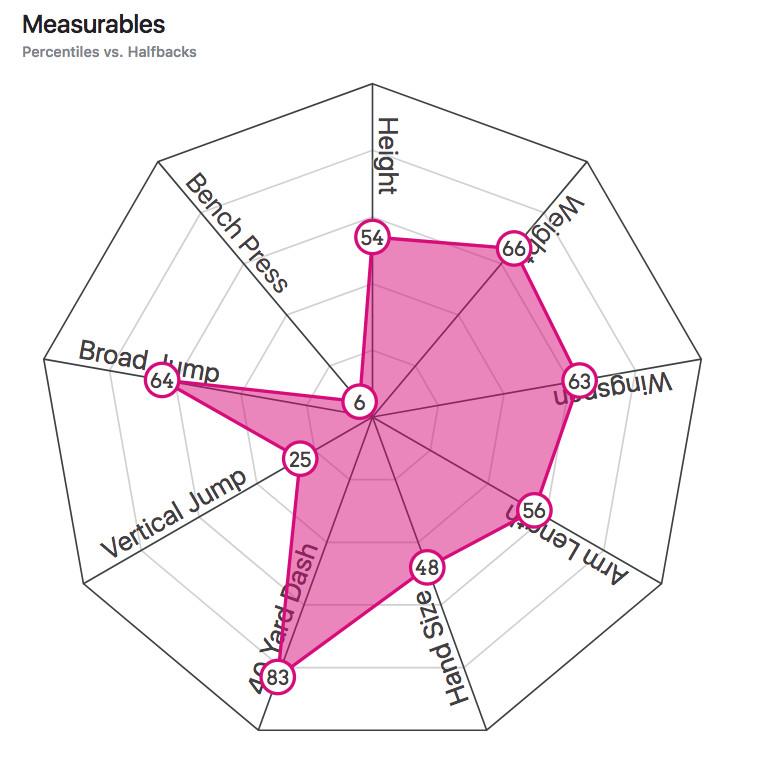
Penny rushed for 172.9 yards per game in 2017, tops in all of college football. He got a lot of carries, but his production wasn’t just a matter of volume, as he also ranked second among all players with more than 160 carries at 7.8 yards per rush. Penny is big, strong, fast, and patient. Unfortunately, no amount of patience is enough in Seattle, where running lanes may not open for months at a time, if not years. The Seahawks offensive line was atrocious in 2017, and GM Jon Schneider didn’t do a ton to fix it this season.
Penny will need to improve his pass blocking to get consistent enough touches to earn the starting job, which he seems to understand. Even if he wins the majority of carries in Seattle––which is no guarantee considering Chris Carson made a lot of defenders miss when healthy last year––it’s hard to project him as a reliable fantasy starter unless Seattle significantly improves from it’s 31st ranked run blocking by DVOA in 2017.
Kerryon Johnson, Detroit Lions via Auburn, Round 2 (No. 43 overall)
6-foot, 213 pounds, 4.54 40-yard dash (at pro day)
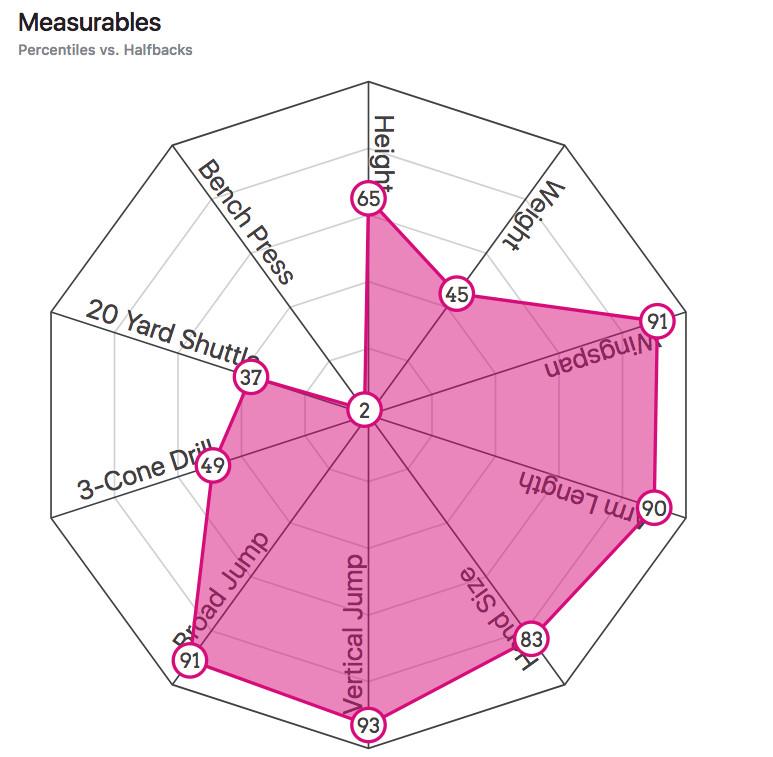
Johnson is a powerful, smooth, and sharp runner. It’s hard to care. Detroit is a running back black hole, as anyone who has drafted a Lions running back in a non-PPR league in the last five years can attest. In 2017, the Lions were last in rushing yards, last in rushing first downs, tied for last in yards per attempt, and second-to-last in attempts last year. That trend is not isolated to 2017. Detroit hasn’t seen a back crack 100 rushing yards in a game since Thanksgiving of 2013, and has seen a back surpass 80 rushing yards in a contest just five times in the last four seasons.
The Lions drafted Arkansas center Frank Ragnow no. 20 overall, which should shore up Detroit’s interior line, but it might not be enough to reshape the worst rushing team of the last five years. Even if the blocking improves, Johnson has to beat out Theo Riddick, Ameer Abdullah, and LeGarrette Blount on the depth chart. He’s someone to flag on the waiver wire, not your draft cheat sheet.
Tier 4: Georgia Running Backs in Crowded Backfields on Teams Currently or Formerly Coached by Bill Belichick
Nick Chubb, Cleveland Browns via Georgia, Round 2 (No. 35 overall)
Measurables: 5-foot-11, 227 pounds, 4.52 40-yard dash
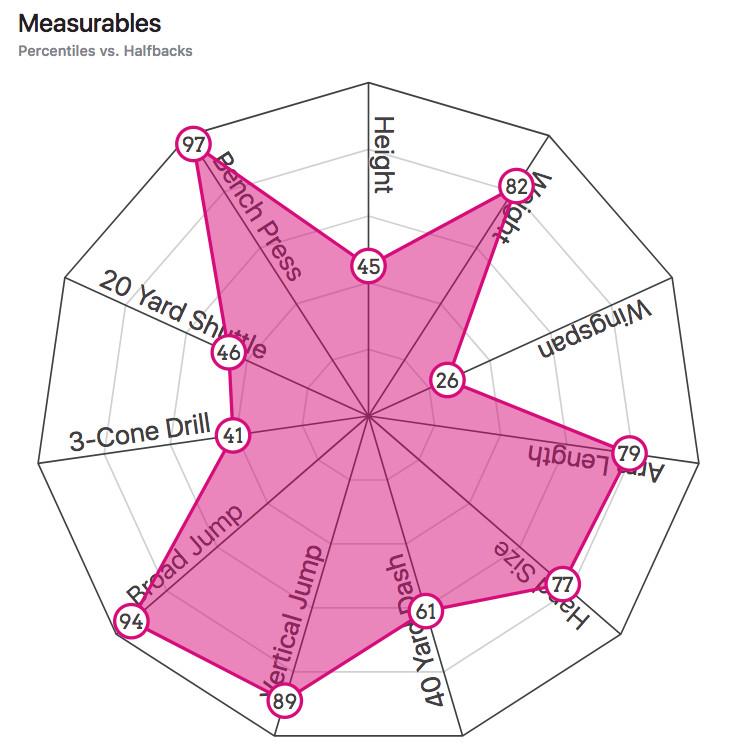
Chubb was one of the best backs in the country as a freshman in 2014, gaining 1,760 yards and 16 touchdowns on 237 touches (7.4 yards per touch) as the second back behind Todd Gurley. A knee injury in 2015 cut his season short and sapped his explosiveness in 2016, but he looked to have rediscovered his form in 2017. He maintains a low center of gravity, which keeps him compact and allows him to make picking up yards after contact look spectacularly easy.
That’s fun for Cleveland’s Process, but unfortunately for fantasy owners Chubb landed with the Browns, who just signed Carlos Hyde to a three-year deal with $8 million guaranteed that could be worth as much as $15.25 million. His skillset doesn’t overlap with running back/receiver hybrid Duke Johnson Jr., but there will be a lot of competition for touches in Cleveland between the backfield and receivers Josh Gordon, Jarvis Landry, and Corey Coleman. Perhaps training camp will clarify Chubb’s role, but even if no. 1 overall draft pick Baker Mayfield can lead a vastly improved Cleveland offense, there might be too many chefs cooking in the Cleveland backfield for Chubb to stand out.
Sony Michel, New England Patriots via Georgia, Round 1 (No. 31 overall)
Measurables: 5-foot-11, 214 pounds, 4.54 40-yard dash
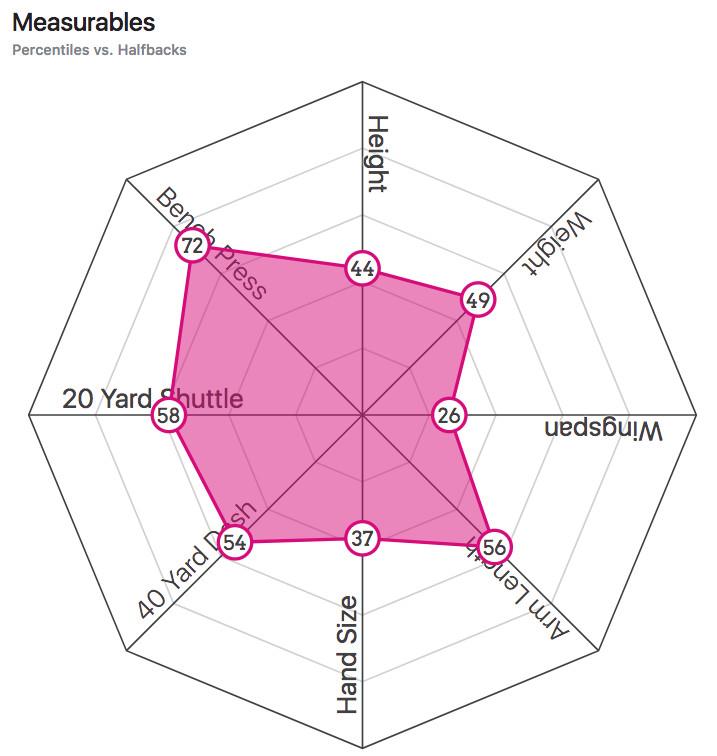
In the heart of the SEC, Michel averaged a mind-numbing 7.9 yards per carry on 156 carries in 2017. Michel is a one-cut, plant-and-go runner who has the speed and vision to take anything to the end zone, and is also a more than capable receiver. But he had a lot of his success running behind second-team All American Isaiah Wynn and only surpassed 175 touches once in his Georgia career, which raised questions about how effective he could be behind a different offensive line and whether he could handle a higher volume of touches.
Luckily, neither of those will be a problem in New England. The Patriots drafted Wynn eight picks before Michel, and no running back carries a full load under Belichick. The Patriots lost Dion Lewis in free agency, but still have Rex Burkhead, James White, and Mike Gillislee on the roster. The Patriots surely have a strong role in mind for the first-round pick, and Michel could do absolutely filthy things if he establishes himself in New England’s offense. However, Belichick won’t hesitate to bench his first rounder if Michel fumbles, which he did 12 times in his four years at Georgia.
Later-Round Picks Worth Watching in Training Camp
Nyheim Hines (NC State, Round 4) and Jordan Wilkins (Ole Miss, Round 5) are both mid-round picks who will compete with Marlon Mack for carries in Indianapolis, Kalen Ballage (Arizona State, Round 4) could earn touches in Miami’s unsettled backfield, and New Orlean’s Boston Scott (Louisiana Tech, Round 6) is a Darren Sproles-esque player who stands 5-foot-6 but managed 51 missed tackles on 199 touches last year.

